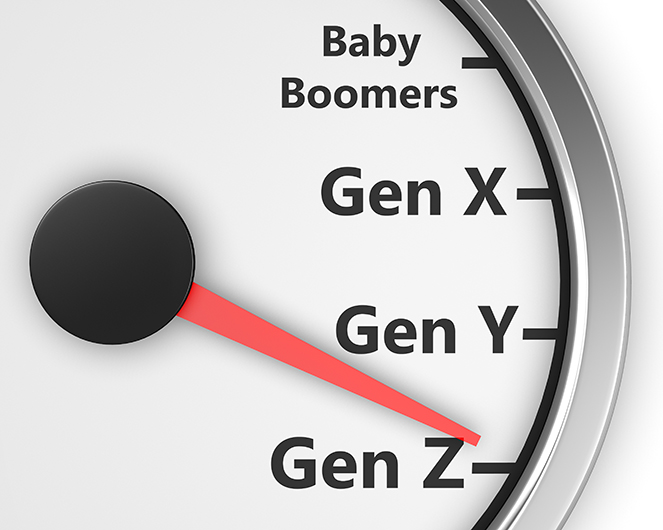More news
- Focus on industrial: Powering the energy industry during extreme heat
- Focus on powder coatings: The coatings industry’s transition to PFAS/PTFE-free solut...
- “We see sustainability as a purpose, as a reason for doing business” – P...
- Focus on industrial: High-performance coating protects tanks at biopolymer production plan...
- Focus on powder coatings: Novel high-speed crosslinking technology

Paul Cochrane reports for PPCJ on the differences in paint choice across different generations, with newer consumers taking more care over colour research
Over the past 50 years, generational differences in style and colour preference have altered demand for decorative paints, but geography and climate are also drivers when it comes to choosing interior coatings. More recently, at a more global level, differentiation has sharpened between the tastes of Baby Boomers and Generations Y (Millennials) and Z.
Ohio, USA-based paint major Sherwin-Williams, which has operated since 1866, has tracked historical demand for paint colours in the North American market since the 1900s. Prior to the Baby Boomer generation (born after 1946 to 1964), decorative paint colours were generally traditional, being subdued and subtle. “Because they were taking pride in their home, they were mainly [purchasing] alkyd [polyester resin] and long-lasting products to maintain intricate detailing of woodwork and mouldings,” said Victoria Young, Designer Account Executive for eastern Canada at Sherwin-Williams.
Once the Baby Boomer generation became homeowners in the 1960s and 1970s, this opened a “new chapter that was a lot more colourful, so mustards and avocado greens [became popular],” said Young. There was a shift towards earthy colours rather than soft pastels.
Demand was driven by trends, spurred on by print media and the spread of television and advertising. Such influences have not gone away. “Trends are very much like [clothing] fashion. It is circular. For instance, the avocado colour has reemerged in this generation,” said Young.
Since the turn of the century, colour trends started to change significantly, moving away from beige and neutral colours to whites and greys.
“A lot of colour in our spaces was eliminated. Talking to interior designers, a lot of this trend is tied to minimalist and open-plan spaces — room dividing walls coming down, clean straight lines, so streamlined and sleek. That became the Millennial outlook,” said Young.
Meanwhile, Baby Boomers, as they have aged, have become more traditional again in colour choice.
“They want classic coatings and colours that would, by and large, be neutral colours, such as beige and creams. Durability and ease of maintenance would be key determining factors,” said Sunil Gudur, a Maharashtra, India-based paint industry consultant specialising in the Arabian Gulf and Indian markets.
READ MORE:
All of the alphabet – Generation X, Y and Z
Globalisation has impacted paint demand trends, with Gulf countries and India increasingly following the paint trends of Western Europe and North America, said Gudur, albeit with some generational differences.
Generation X (born between 1965–1981) “show a distinct desire to balance between the classic and modern. There’s a willingness to use bold colours and experimenting with textures has gained prominence. Also, sustainable coatings catch their fancy and hence, their emphasis is on being eco-friendly,” he said.
Young noted a similar trend by Generation X in North America, to be more contemporary and modern through “more neutral walls but generalising towards bold accents and textures to add interest to wall surfaces. It is a more eclectic mix of colours.” This trend started on the west coast of the USA and then spread to the American south and Midwest.
Millennials (or Generation Y, born between 1982–1994) are seen as having similar preferences to Generation X, with a focus on sustainability and minimalism, but notably are influenced by online research for reviews and trends, said Gudur.
Generation Z (born between 1995–2012) is also influenced by online research and social media. “They come across as being more self-centred and individualistic. It’s all about tailoring to suit the personal choices, which gets reflected in unique colours and patterns. They like to be in the ‘now’ rather than look towards the past,” said Gudur.
With home prices now high, the younger Generation Z are not typically homeowners, so there is a tendency towards more multi-generational living – impacting paint and coating choice.
“Gen Z is staying with mum and dad or renting instead of buying. In a parent’s home, a bedroom or recreational room is about geometric patterns, prints, bright colours and murals. Our stores are constantly helping young customers put together funky seascapes or murals,” said Young. In such multi-generational homes, she added, it is “not unusual to see an eclectic mix of styles”.
The COVID-19 pandemic period also had an impact across generations, driving do-it-yourself (DIY) painting and more demand for brighter colours among the younger consumer segment due to the amount of time spent indoors, she added.
READ MORE:
View from the US: Focus on sustainability has powder coatings poised for growth in the US
Urban vs rural influences
There is a general difference in trends between urban and rural areas, with residents of the former typically more conscious of trends, as well as being the first adopters. “Urban customers are easily drawn towards modern and eco-friendly options whereas [people living in] rural areas will be skewed towards the traditional range,” said Gudur.
Young noted that in North America, customers in urban areas tend to go for more sleek and open spaces, whereas in more rural areas there is a trend towards blending rustic looks with open spaces.
That said, climate and the number of sunlight hours also have a major influence on choice of paint colours across the generations. “The temperature of a colour has an influence, with blues, greens and purples creating a cooler atmosphere, but definitely you see warmer colours in [homes on] the east coast, to try and brighten up a room in the wet, cold and snowy season. In the south, a colour may be [used] more to enhance the sunshine they are already getting. It [colour use] does shift across the country,” said Young.
Coating solutions developer and manufacturer Hempel considers such factors more important than generational differences as drivers of purchasing behaviour. The Denmark-based multinational said to PPCJ that “we do not assess purchase behaviour based on age group…”. It argued that, with its customers, age is less important regarding colour palette and other home coating preferences than “geographic location, light in the space, purpose of the space and personal preference…”.
Young noted that at paints stores across North America, customers are a mixture of ages and income levels, and they are increasing the time taken on choosing colours: “What we are seeing is that new home buyers, or the newly married, or those starting a family, are doing more research into paint colours and trends,” she said.
Paint companies determine their colour ranges based on research and forecasts: “This is not always advertised, but it is there, and colours are specified by marketing teams,” said Young.
Gudur noted that design teams at larger paint manufacturers have experts from various fields including cosmetics, clothing, furniture, and fashion to “provide input on what’s new and trendy and liked.”
For more information, contact Keith Nuthall:
edit@int-news.net
www.internationalnewsservices.com







